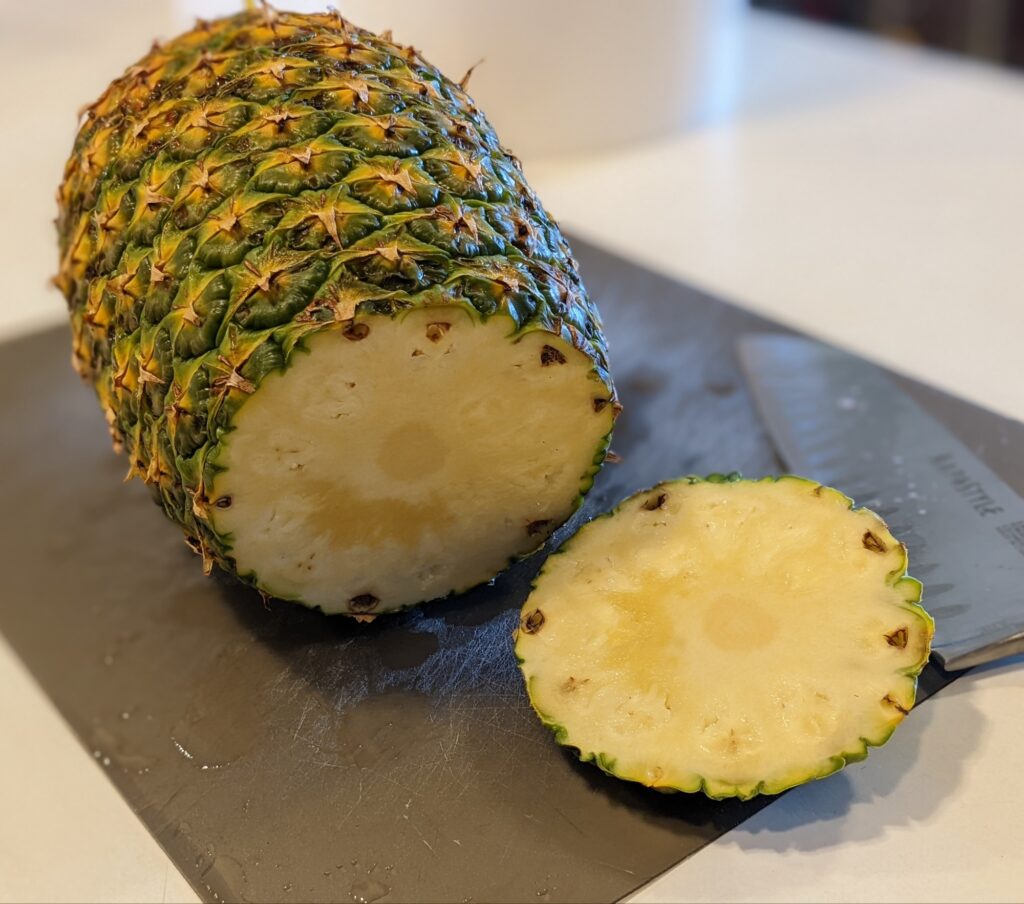
When was the last time you bought a whole pineapple and cut it up? And when you did, did you also use the peel and core? If not, you’re missing out: fermented beverages are just waiting to be made from the humble pineapple “waste”…like delightful country wine. If you like frugal and creative, read on!
I’ve posted previously about making pineapple peel wine, and it’s a staple on our homestead; it’s easy, inexpensive, and – perhaps most importantly – it’s tasty. While you can certainly use the peel and core to make Tepache, a probiotic beverage, why not try your hand at wine?
It all starts with cutting up the pineapple. It should be ripe, but not overripe: yellow at the bottom is typically a sign that the pineapple is ready to use. I wash the pineapple under warm water, scrubbing lightly with my hands (because, after all, that pineapple may have been used like a football by someone along the supply chain and who knows what’s on it).
Once it’s been rinsed, I cut off the outer peel with a sharp knife, and then cut the flesh away from the core.
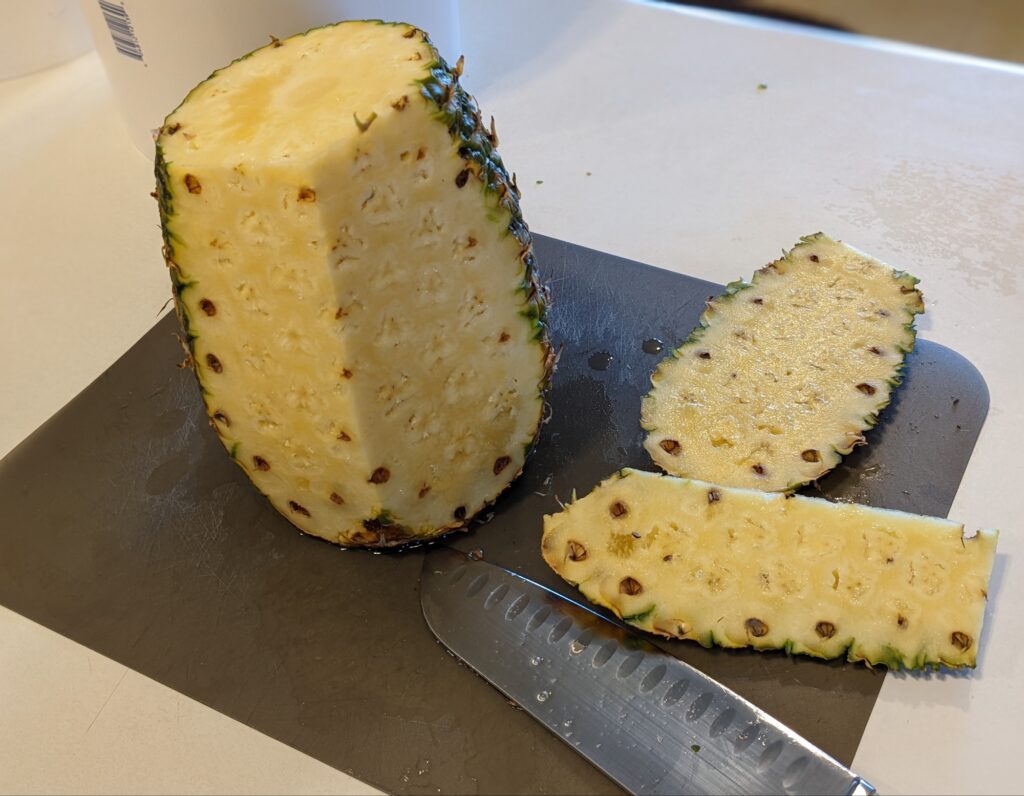
The peel and core are chopped into pieces and placed in the primary fermentor.
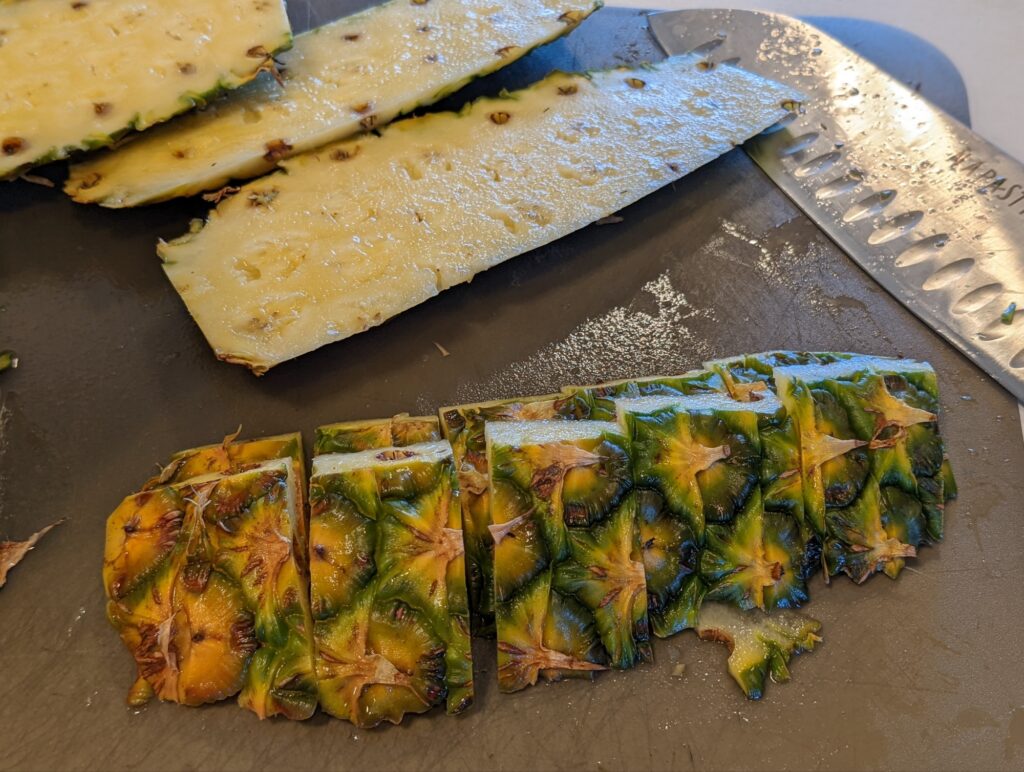
Sugar, water, a handful of chopped raisins, and pectic enzyme are added and stirred in.
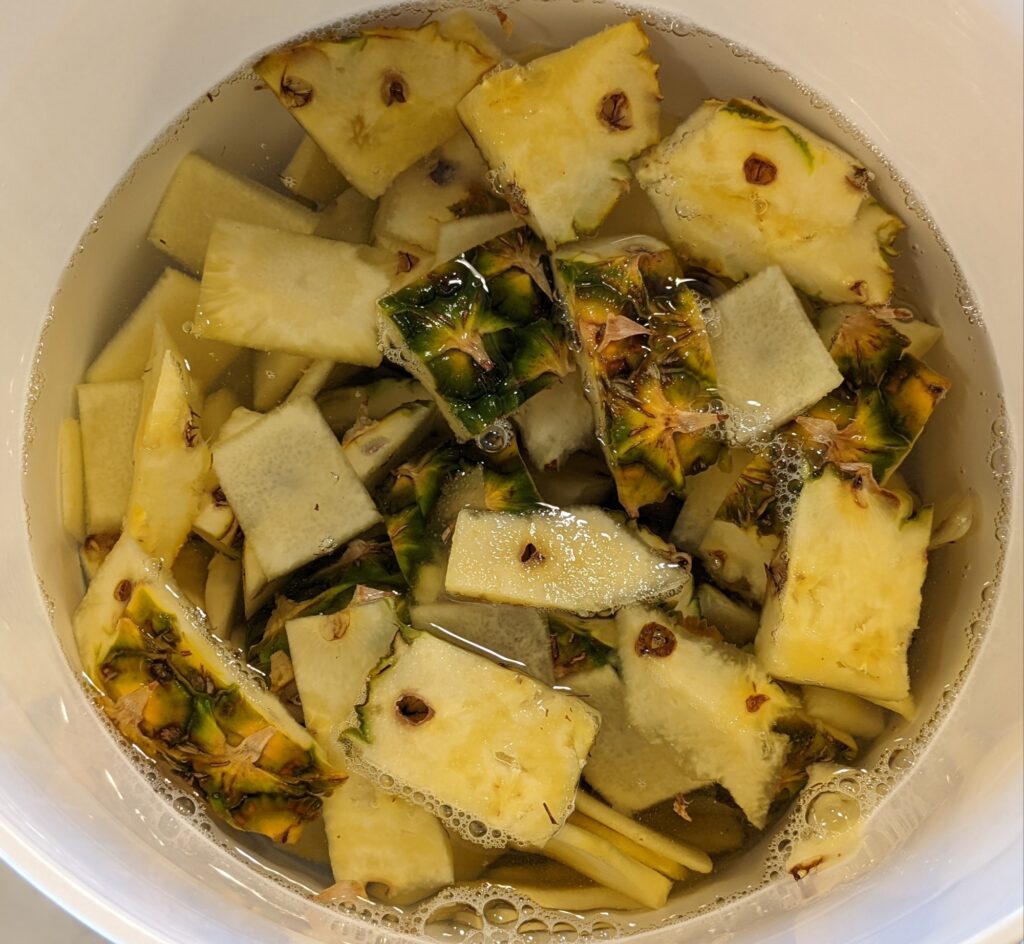
It’s at this point that the recipe diverges so that two different wines are created: pineapple-strawberry and pineapple spice.
For the pineapple-strawberry, frozen strawberries are added. They’ll add a delicate fruity flavor to what might otherwise be a fairly dry (finished) white wine, as well as imparting a blush color.
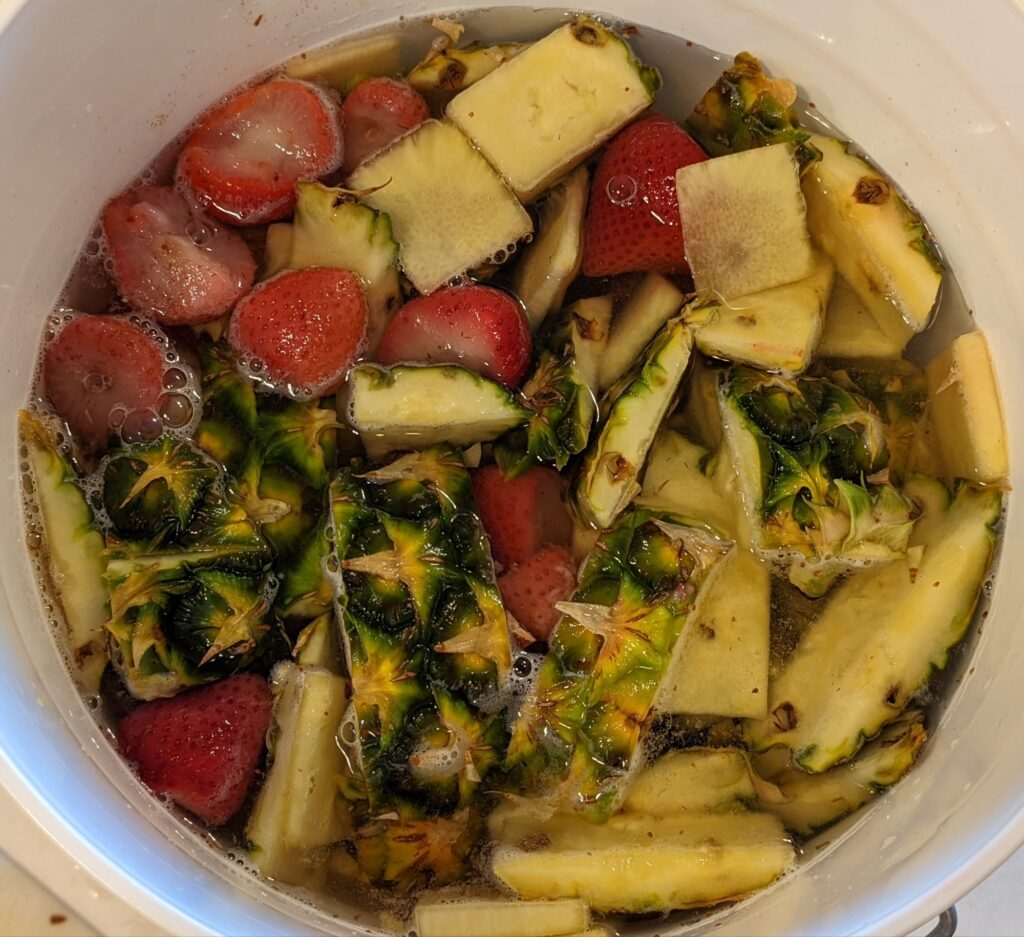
For the pineapple spice, I steeped two black tea bags with thinly-sliced ginger, whole cloves, crushed green cardamom pods, a couple of star anise, and two small cinnamon sticks. The brew steeped for fifteen minutes, then I removed the tea bags. The fragrant liquid was added to the primary fermentor, and I added the peel and fruit from a half an orange.
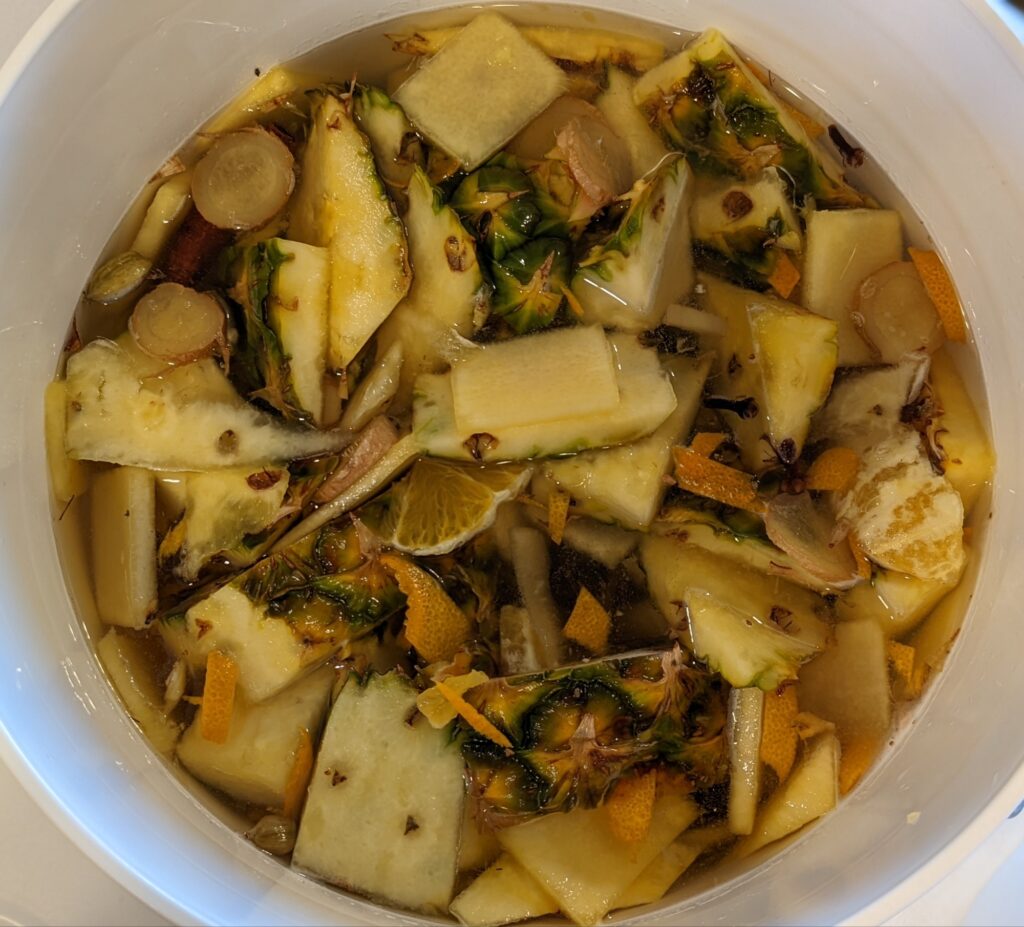
To each, wine yeast (Premier Cuvée) was added. Premier Cuvée is an inexpensive yeast that can be used with most types of wine, and it can be purchased from many retailers, not just wine shops.
As the yeast grows active, the wine will show clear signs of fermentation like foam at the top; it may softly hiss when stirred; and it may begin to acquire the telltale “fermenty” fragrance. I like to stir the wine for about the first five days; daily checks also allow for adjustment as needed, such as adding yeast nutrient, more yeast, or placing the fermentor in a warmer location, to encourage fermentation.
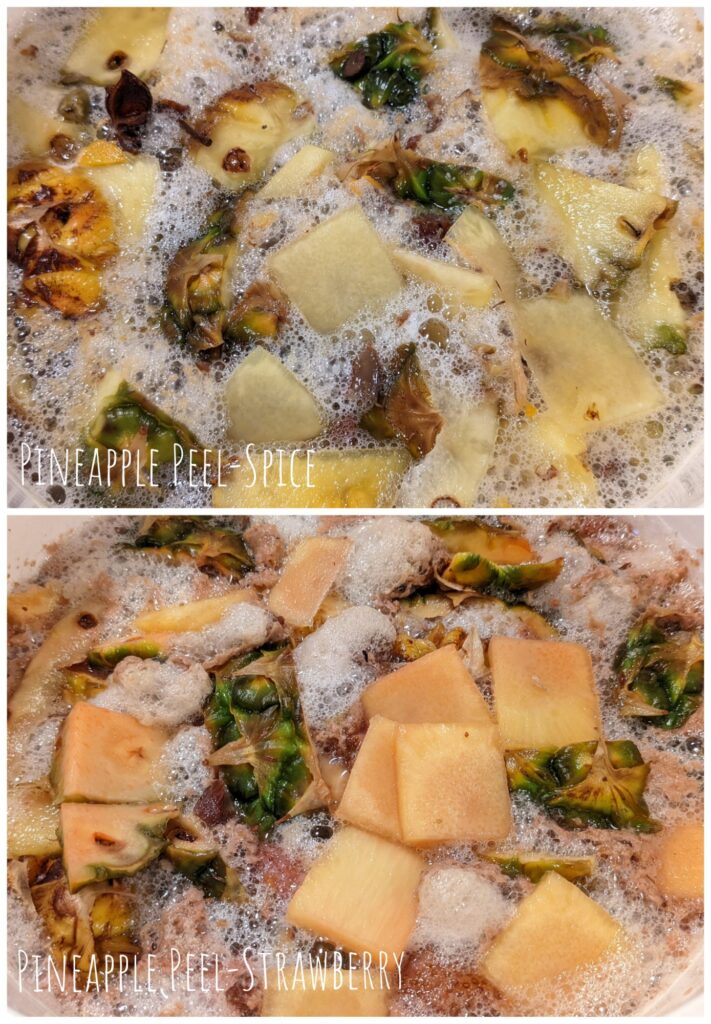
After the five days have elapsed, the solids will be strained out of the liquid and the must will go into carboys with airlocks to complete the fermentation.
And those already-used peels and cores (and even the tops) won’t go to waste: our pigs happily eat them, along with the yeasty lees from previous batches of wine. This is truly a fermented homestead, so our livestock enjoy the byproducts of our ferments, like extra SCOBYs (chickens love to tear them apart), extra water and milk kefir grains, fruit from second ferments, and more. Challenge yourself today to use food in ways that minimize waste – like lacto-fermented watermelon rinds – and discover how rewarding it can be!
